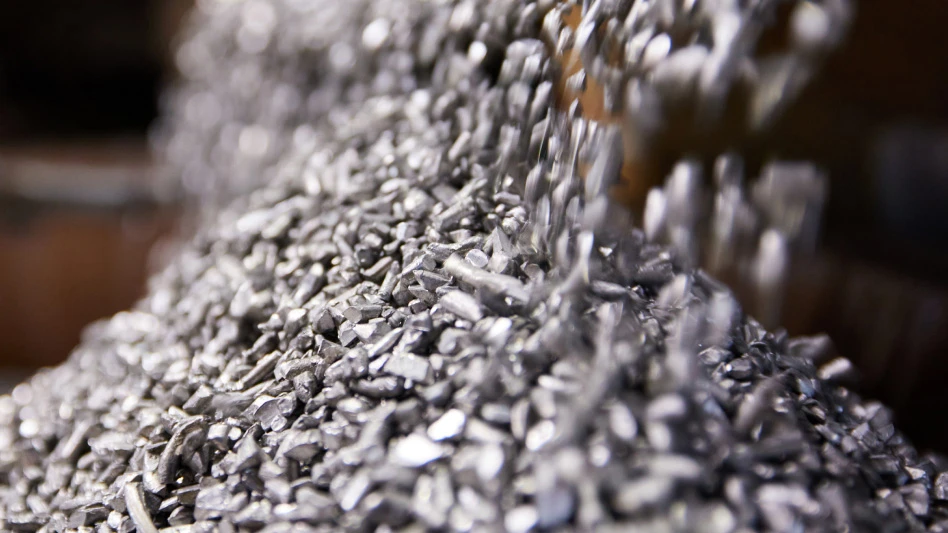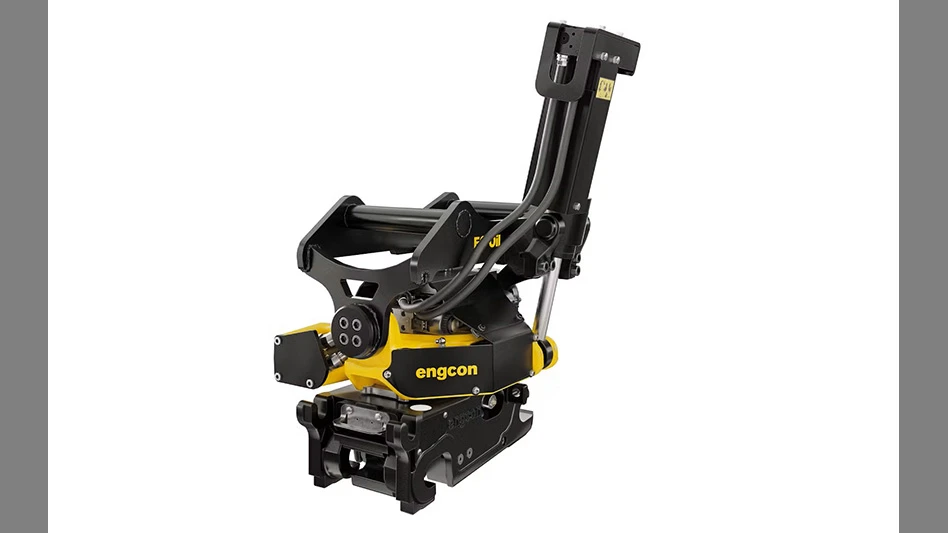Estimated consumption of iron and steel scrap on a daily average basis in January 1997 was up 3 percent compared with that in December 1996, according to the U.S. Geological Survey. Compared with December 1996 data, daily average production fell slightly, net receipts rose slightly, and stocks at the end of the month fell 3 percent.
These observations are based on responses from 71 percent of the companies surveyed that manufacture pig iron and semi-finished steel products, which represent 57 percent of the total scrap consumption in those sectors, and estimates for companies that didn’t respond to the survey.
WEST COAST FERROUS EXPORT MARKET SOFTENSThe flow of ferrous scrap to overseas markets appears to be slowing on the West Coast, according to several suppliers. "The export market is breaking up out here," claims one processor in California, who points to stronger foreign currencies making exports less attractive.
Another processor in California says that more material is either moving to domestic mills or to Mexico as consumers are becoming more aggressive. "Both the old and new mills in this region are demanding more material, so that, too, may account for some of export slowness – scrap movements are shifting," he says.
FERROUS SCRAP SHORTAGE UNLIKELY, SAYS REPORTDespite predictions by some in the industry that there could be a shortage in ferrous scrap supplies in the coming years, an ongoing worldwide shortage of scrap is highly unlikely, according to a new report titled Scrap and the Steel Industry, from the International Iron and Steel Institute’s Committee on Raw Materials, Brussels, Belgium.
With more mills and new capacity coming on line in the next few years, some observers suggest that the accompanying increase in scrap needs will have to be met by increased collection of obsolete scrap. The IISI report notes that previously achieved scrap recovery rates of between 45 percent and 65 percent have left substantial proportions of scrap uncollected, and more may, in fact, be recoverable.
For example, in 1993 obsolete scrap collected in the European Union jumped 21 percent from the previous year’s level, presumably by drawing on this accumulated reservoir, in addition to the more predictable flow of scrap coming out of the present infrastructure. Scrap forecasters should take into account this flexibility in the scrap market, as well as the supply of scrap alternatives, the report notes.
The higher level of scrap demand expected over the next few years will certainly tighten the scrap market, pulling up prices – which are already about $20 per metric ton higher than in the early 1990s – while increased processing, sorting, grading and quality assurance will push up costs. As a result, scrap prices are likely to remain firmer than in the past, says the report.
Scrap and the Steel Industry assesses future metallics requirements and examines the factors determining future metallics availabilities. It includes descriptions of the structure of the scrap recycling industry and the transportation of scrap in the major world regions, along with case studies from different countries. The impact of regulations and legislation, internationally and in specific countries and regions is outlined. Finally, the report includes annexes on the treatment of end-of-life vehicles and on scrap specifications in Europe and the United States.
The 64-page Scrap and the Steel Industry report is available by calling (32-2) 702-89-25; faxing (32-2) 702-88-99; or e-mailing IISI at library@iisi.be .
ITALIANS SEND OLDER AUTOS TO SCRAP HEAP
Italians have sent nearly 139,000 cars to the scrap yard since the government brought in incentives to encourage motorists to trade in old cars for new, according to the country’s main automobile club, ACI.
The figure corresponds to the number of cars removed from Italy’s vehicle register in the first three months of 1997. The ACI statement gave no comparative figure for the first quarter of 1996.
Officials at ACI say 29,227 new cars had been registered in place of scrapped cars – a difference it attributed to regulations that give Italians 60 days to submit their application. In January the government introduced cash incentives for car owners to scrap vehicles more than 10 years old and buy new ones in a scheme to boost flagging domestic sales.
Under the program, which will last until the end of September, car makers have to match each government bonus with a discount for the same amount.
Italian-based Fiat, the domestic market leader, has forecast total extra car sales of some 300,000 – half of which would be Fiat name-plate vehicles, as a result of the incentives.
MINIMILL REOPENS AFTER CLOSING DUE TO EXPLOSION
North Star BHP Steel has resumed steelmaking at its Delta, Ohio, minimill after closing the operation when an explosion rocked the minimill on February 27. The cause of the explosion has yet to be determined. The impact damaged air ducts between the furnace and fans leading to the mill’s dust-collection baghouse.
The minimill was in the process of starting up when the explosion occurred, says Greg Lauser, a spokesman for North Star Steel, Minneapolis.
The mill, at full capacity, is slated to produce around 1.5 million tons per year of flat rolled steel. The finished product will be sold to original equipment manufactures, coil processors, and auto manufacturers. Raw material for the mill consists of ferrous scrap, as well as virgin iron units.
Along with selling the finished product to the open market, North Star has signed a contract with Worthington Steel to provide markets for one-third of the finished product, according to Lauser.
ALABAMA MINIMILL STARTS PRODUCING COIL
Trico Steel Co., Decatur, Ala., a joint venture minimill between LTV Steel, British Steel, and Sumitomo Corp., produced its first roll of steel coils at the end of March. At full capacity the mill is slated to produce more than 2 million tons of steel a year. The mill was built at a cost of $450 million. It is designed to roll hot metal directly from the furnace into thin sheets of steel that traditionally have required added cold rolling.
The mill will be using scrap ferrous metal, as well as virgin iron units and direct reduced iron as its raw material.
The plant’s opening has garnered a significant amount of criticism from union steelworkers, who claim LTV’s move is an attempt to divert funding for LTV’s Cleveland steel mill toward the non-union minimill in Alabama.
SCHNITZER POSTS DECLINE IN QUARTERLY FIGURES
Schnitzer Steel Industries, a major ferrous processor headquartered in Portland, Ore., reported net income of $1.4 million on revenue of $76.6 million for the quarter, ended Feb. 28. This compares with net income of $5.4 million on revenue of $82.7 million for the same time last year.
The company also noted ferrous revenues declined from $59.3 million last year to $44.4 million the same time this year. At the same time, the average selling price for ferrous scrap has declined $13 to $131 a ton.
Company officials are more upbeat about the third quarter. "Ferrous scrap export selling prices on sales booked so far during our third quarter are over $13 per ton higher than the average price realized for the second quarter," Robert Philip, president of Schnitzer, said when the figures were released. However, as of press time, processors are saying that the export market is softening and prices are heading downward.
Philip also noted that improvements in scrap selling prices should result from larger contributions to the company’s earnings over the next several quarter by the new joint ventures acquired as part of the Proler International Corp. acquisition last November.
METAL RECOVERY ADDS THIRD ELECTROWINNING LINE
Officials at Metal Recovery Technologies say the addition of a third electrowinning cell by the end of April to its East Chicago dezincing plant will raise zinc and black scrap production to four to five metric tons per day and about 75,000 metric tons a year, respectively. The company had just recently added a second electrowinning cell at the plant, which started operations last fall.
Meanwhile, the company plans to submit a proposal to General Motors by August for a 100,000- to 250,000-ton-per-year dezincing plant to be built in the Michigan/Ohio region.
"All things being equal, we would look to be signing a contract in September," says Michael Lucas, chairman of MRT. Construction would start by year-end. The plant would recycle galvanized scrap for GM, return black scrap to the automaker for remelting into steel, and sell the zinc. "We would build it and GM would give a guaranteed supply of scrap," says Lucas.

Explore the May 1997 Issue
Check out more from this issue and find your next story to read.
Latest from Recycling Today
- Private equity firm announces majority investment in Sprout
- Author predicts spike in silver’s value
- SWANA webinar focuses on Phoenix recycling collaboration
- Domestic aluminum demand up through Q3 2024
- IntelliShift honored at IoT Breakthrough Awards
- Ace Green Recycling finalizes plans for battery recycling site in India
- Ambercycle, Benma partner to scale circular polyester
- NIST database aimed at increasing textile recycling





